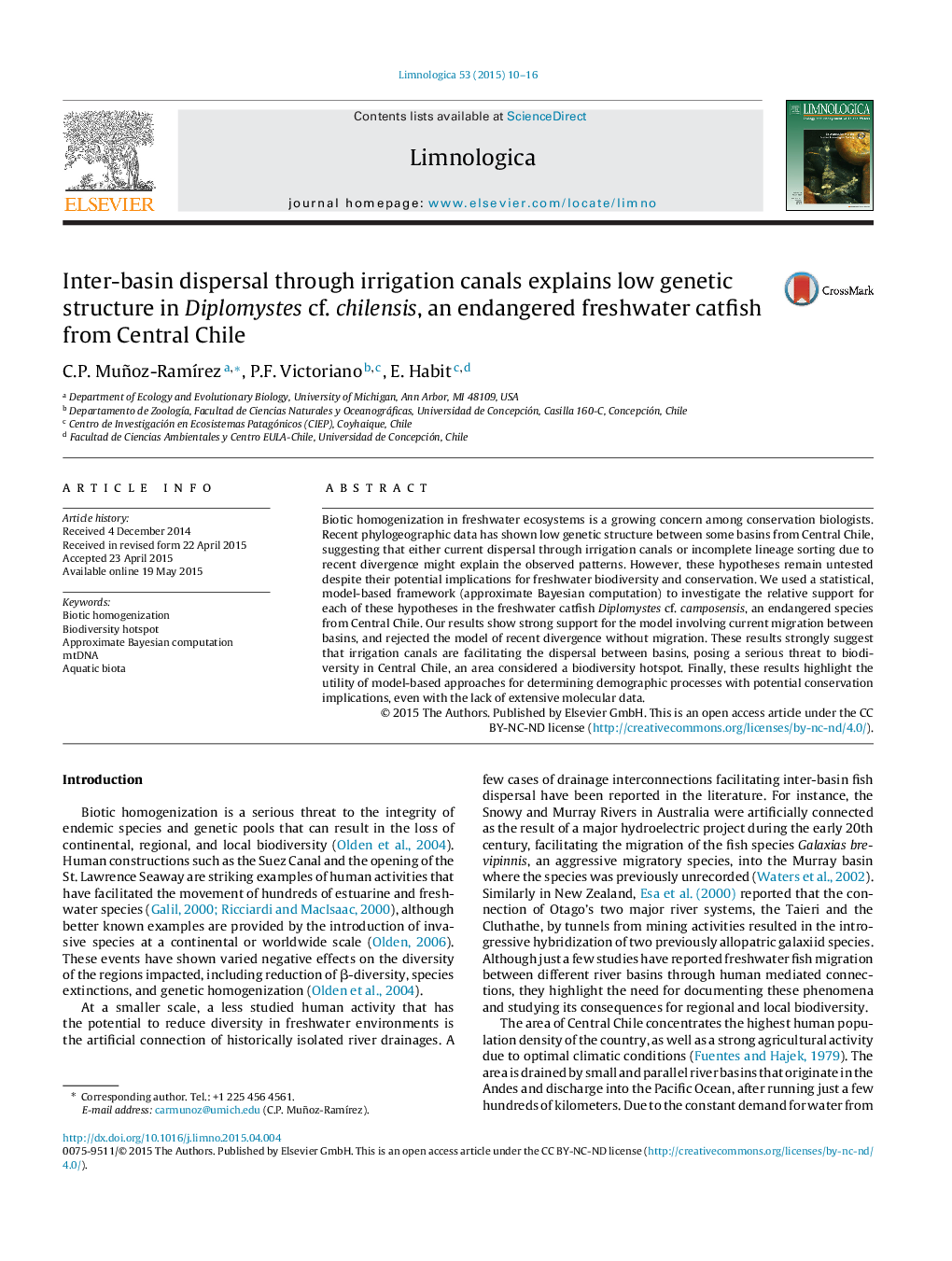| Article ID | Journal | Published Year | Pages | File Type |
|---|---|---|---|---|
| 6305550 | Limnologica - Ecology and Management of Inland Waters | 2015 | 7 Pages |
â¢We found strong evidence of fish dispersal between basins from Central Chile.â¢Inter-basin dispersal could only be explained by connections through irrigation canals.â¢Migration between basins was high, suggesting easy pass through canals.â¢This finding reveals a serious threat for the aquatic diversity of Central Chile.
Biotic homogenization in freshwater ecosystems is a growing concern among conservation biologists. Recent phylogeographic data has shown low genetic structure between some basins from Central Chile, suggesting that either current dispersal through irrigation canals or incomplete lineage sorting due to recent divergence might explain the observed patterns. However, these hypotheses remain untested despite their potential implications for freshwater biodiversity and conservation. We used a statistical, model-based framework (approximate Bayesian computation) to investigate the relative support for each of these hypotheses in the freshwater catfish Diplomystes cf. camposensis, an endangered species from Central Chile. Our results show strong support for the model involving current migration between basins, and rejected the model of recent divergence without migration. These results strongly suggest that irrigation canals are facilitating the dispersal between basins, posing a serious threat to biodiversity in Central Chile, an area considered a biodiversity hotspot. Finally, these results highlight the utility of model-based approaches for determining demographic processes with potential conservation implications, even with the lack of extensive molecular data.
